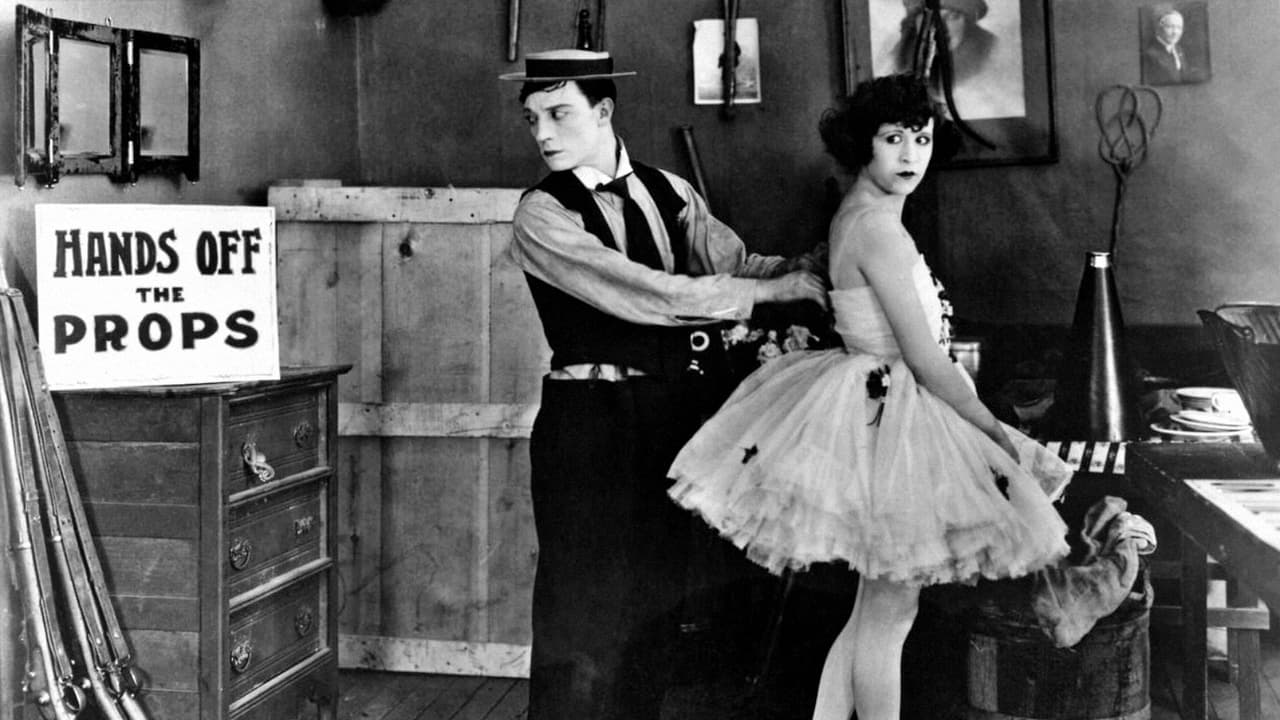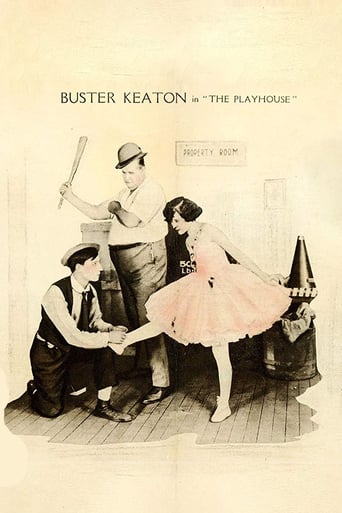



not as good as all the hype
A different way of telling a story
There is just so much movie here. For some it may be too much. But in the same secretly sarcastic way most telemarketers say the phrase, the title of this one is particularly apt.
View MoreClose shines in drama with strong language, adult themes.
View MoreIn The Play House there is an opening sequence with multiple Buster Keatons on stage, playing the performers, musicians and the audience. It is a dream sequence which also comes across as a tribute to Georges Méliès.This short then settles down as Keaton plays a stage hand and a performer, well a performing monkey. Keaton also tries to woo his girl but she is a set of identical twins and he keeps picking on the wrong twin to kiss. He then gets constantly interrupted by the main performer who is also a beastly big man leading to hijinks and acrobatics.This short is rather episodic and surreal. Keaton's stunt work is more safe here as he was recovering from an injury at the time.
View More"This fellow Keaton seems to be the whole show.""The Playhouse" is one of Buster Keaton's best and one of the most ingenious films from around this time that I've seen. It might never have been, either, if Keaton hadn't broken his ankle, thus temporarily prohibiting him from some of the daredevil stunts he'd become famous for. Instead, "The Playhouse" relies upon technical innovation and intelligent concepts; as a result, it's one of Keaton's most cinematic films, alongside "Sherlock, Jr."The first six and a half minutes are especially brilliant, featuring an opera house where all the performers, staff and audience members are Buster Keaton. It unfolds wonderfully, beginning with a sole Keaton purchasing a ticket, then opening upon Keaton as the conductor of a six-Keaton orchestra, a la trick-shot pioneer Georges Méliès's "L' Homme orchestre" (The One-Man Band) (1900). That's followed by a nine-Keaton minstrel show, two Keaton's dancing in harmony and the above retort made by a suspicious Keaton audience member to top it off. In addition to what seems an intentional allusion to Méliès, others consider the program gag a rib at influential producer Thomas H. Ince, who, indeed, credited himself repeatedly in the opening credits of his movies. There's a resemblance, especially in the interaction of the audience members, to Charlie Chaplin's "A Night in the Show" (1915), too.Keaton reveals the opening sequence to have been a dream, something he did with some of his other films, as well. What I think is especially interesting about the remainder of "The Playhouse", as well as the first sequence, is its self-reference. Even though the film is set in theatre, the cinematic self-reference isn't lost, and much of "The Playhouse" alludes to the deceptive nature of movie-making, from the multiple exposure effects to realize multiple Keaton's to the illusion that a set is Keaton's bedroom. Furthermore, the twins and the use of mirrors reference the first part of the film.The latter part of the film greatly resembles "Back Stage" (1919), which Keaton made with Roscoe "Fatty" Arbcukle. Perhaps even the same sets were used for both films; otherwise, they were duplicated. As in "Back Stage", an acting troupe quits, forcing Keaton and some other amateurs to take their place for the night's show. There's the typical backstage mayhem, with Joe Roberts chasing Keaton around. The aping bit from "Moonshine" (1918) and the cup of water gag from "The Rough House" (1917) are also both revitalized here. Every scene in this ingenious, witty picture takes on greater significance and humor in referencing itself, other films and cinema in general.
View MoreFor some reason, I find the Buster Keaton features such as "the General" and "Steamboat Bill Jr." to be well-made, yet lacking in the explosive laughter I would expect. His short films however, pack a punch with comedy. "The Playhouse" is his best work ever - a showcase of his versatility and unparalleled comedic techniques. Any musician watching his clarinet technique (gnawing on the mouthpiece) can't help but hit the floor when they watch the opening orchestra scene. Likewise, the variety of audience members he plays, this is amazing. I can't help but wonder... how long (given makeup and costumes) did this one scene take to film? There are also more Warner Brothers cartoon foreshadowing in this than most other films I've seen. For a true short film masterpiece, see this film.
View MoreTo be honest, the only video of this movie I've seen has been rather washed out. But the wonderful special effects of the first half still show through. This isn't a Melies' fantasy with avant garde stylings and effects, but rather a simple and almost elegant movie with one simple effect: Buster Keaton plays ALL the parts in a theatre presenting a minstrel show. This may not seem much in the CGI-world of the nineties...but back in the 1920's it was a tour de force. The ease with which Keaton brings together at least ten separate performances at one time is amazing...one can only imagine the planning that went into this movie.The second half is a tad low-key...though it of course features more of Keaton's acrobatic slapstick, and a particularly striking bit with him dressed up as a monkey.This is definitely not The General or Steamboat Bill, Jr., but it is very enjoyable and, I believe, very deserving of a high place in the canons of early film for the artistry that Keaton applied to the special effects.
View More